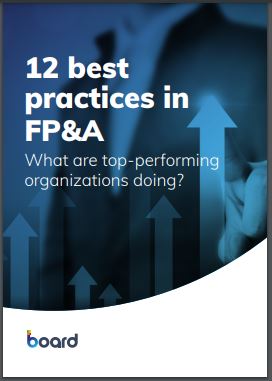12 Best Practices in FP&A

Most CFOs are not happy with their Financial Planning and Analysis (FP&A) process, believing it delivers too little value and squanders resources. The biggest challenge facing many companies today is the difficulty in accurately predicting future revenues and cash flows. This has been highlighted even further by a number of recent global events that impact standard businesses activities. As a result, previous assumptions and trends in FP&A are shifting to a place where they rarely remain viable. In short, planning today is far more complex.
As a result, CFOs often ask, “What are the best practices in FP&A?”
To date, the answer has flitted between conventional wisdom, anecdotes, and in-the-moment ideas propagated by finance articles. The one consistent thing that has been truly lacking is hard data…until now. Looking at key insight gathered by the IMA® (Institute of Management Accountants) with opinions and thoughts collated from more than 700 organizations, we can begin to explore what great FP&A looks like and where businesses can implement the right change. The IMA survey focuses on what the most successful organizations are doing differently when it comes to FP&A. These successful organizations consistently meet or exceed their targets, and they
consistently meet or beat their competition.
As a brief overview, the most successful organizations report back that their FP&A process:
• delivers shareholder value (or business value when privately held)
• drives execution of the strategy
• provides the mechanisms to ensure financial and operational goals are aligned and achieved
• builds organizational awareness of each department’s role and overarching strategy
• ensures optimal allocation of resources
• coordinates initiatives, projects, and programs.
Combined, these points signify maturity and work to achieve top results for the business. The question is how did these best-managed organizations achieve these?


